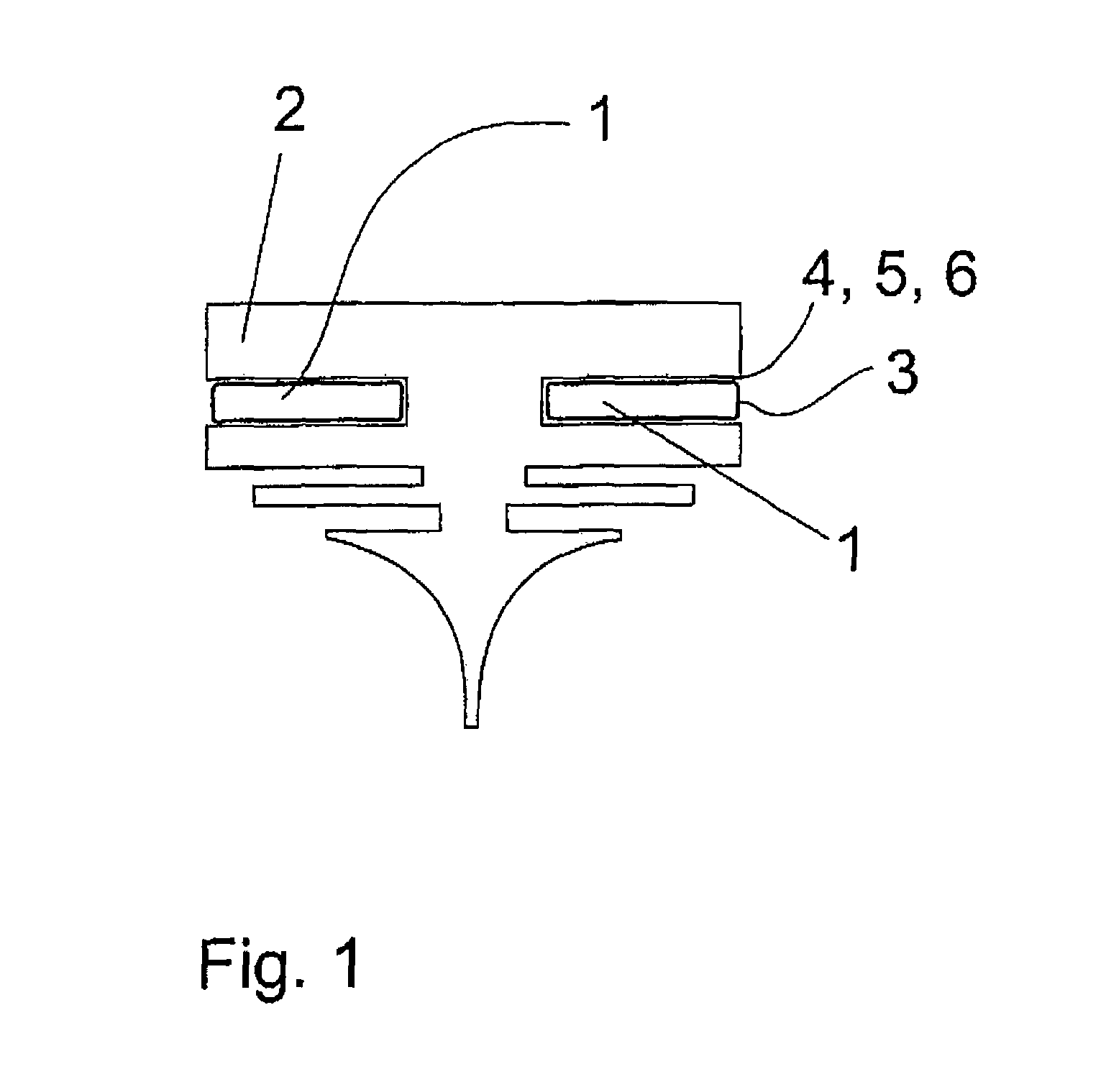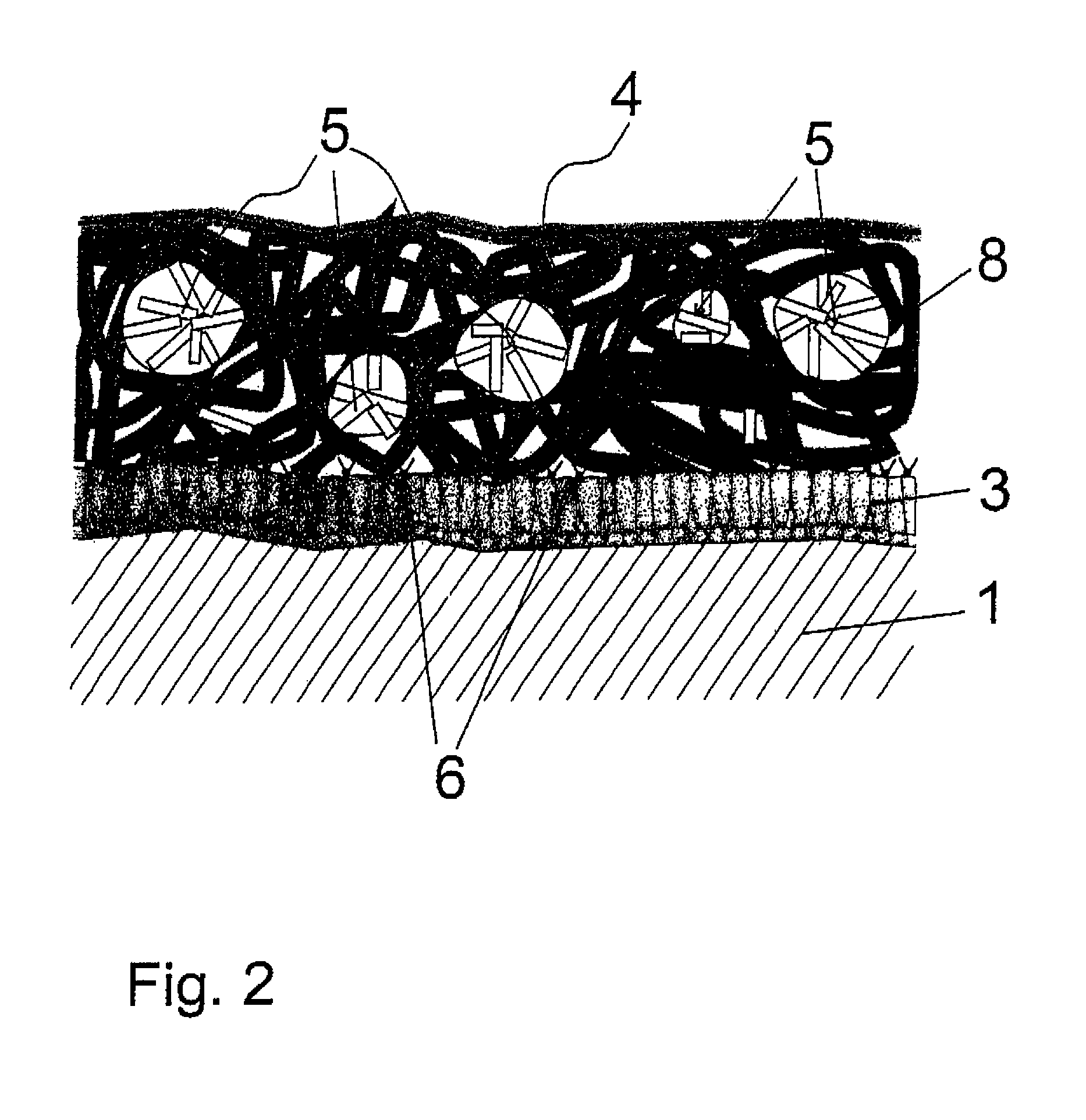Method for producing spring rails for windshield wipers
- Summary
- Abstract
- Description
- Claims
- Application Information
AI Technical Summary
Benefits of technology
Problems solved by technology
Method used
Image
Examples
Embodiment Construction
[0040]The spring rail 1 according to the invention is made of steel and is provided with a conventional wiper blade 2. The spring rail 1 has a total of three layers, a base layer 3 made of zinc, a cover layer 4 with partially crystalline components 5 that are soluble in CHCl3, and an intermediate reaction or anchor layer 6 made of anchor molecules in a typical embedding material 7 (FIG. 3), which is used merely for embedding the sample.
[0041]The base layer 3 is composed of zinc or a zinc alloy with up to 15% nickel, iron and cobalt, separately or in combination. The base layer 3 is applied galvanically in an electrolytic bath directly onto the surface of the metallic spring rail 1. The base layer 3 has a thickness d1 from 2 to 20 μm, preferably from 3 to 10 μm.
[0042]The zinc contains in the anchor layer 6, i.e., into transition region to the cover layer 4, oxygen-rich anchor compounds intended to bond or anchor the layers 3 and 4 with each other via molecular forces.
[0043]Zinc compo...
PUM
| Property | Measurement | Unit |
|---|---|---|
| Temperature | aaaaa | aaaaa |
| Fraction | aaaaa | aaaaa |
| Fraction | aaaaa | aaaaa |
Abstract
Description
Claims
Application Information
 Login to View More
Login to View More - R&D
- Intellectual Property
- Life Sciences
- Materials
- Tech Scout
- Unparalleled Data Quality
- Higher Quality Content
- 60% Fewer Hallucinations
Browse by: Latest US Patents, China's latest patents, Technical Efficacy Thesaurus, Application Domain, Technology Topic, Popular Technical Reports.
© 2025 PatSnap. All rights reserved.Legal|Privacy policy|Modern Slavery Act Transparency Statement|Sitemap|About US| Contact US: help@patsnap.com



